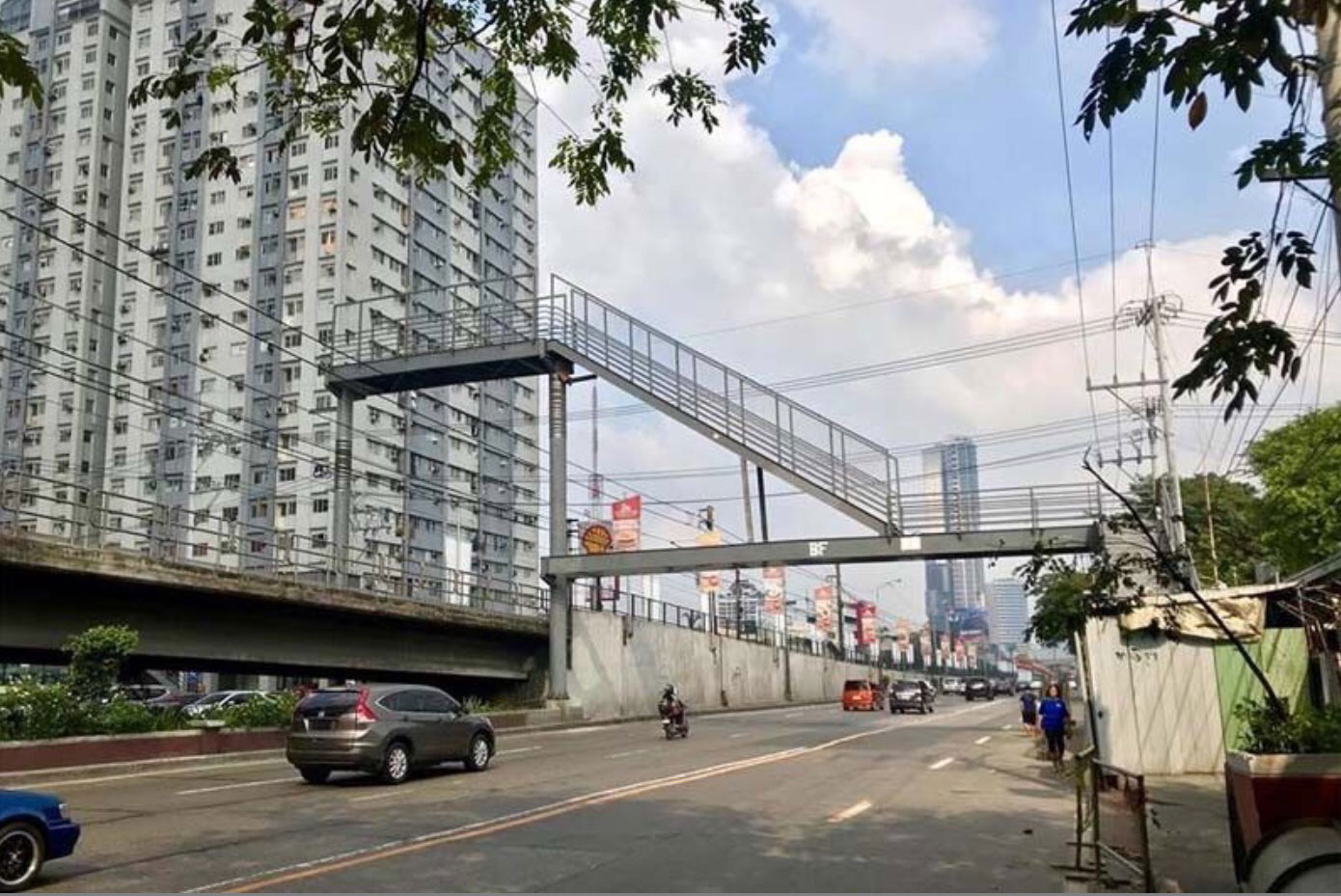EDSA’s “Stairway to Heaven”
/(Source: Mackey Fernando/facebook)
The MMDA exercises regulatory and supervisory authority over the delivery of services within the four cities and 13 municipalities that make up Metro Manila. Oftentimes, however, some of its projects are caught in the quagmire of criticism not just from citizens but also the local governments.
Some of the initiatives undertaken by MMDA include “coding” and other restrictions for vehicles plying Metro Manila’s major thoroughfares. Vehicle owners are banned from public roads on certain days of the week — depending on the last digit of their license plates — as a way to ease traffic. MMDA has also banned single-occupancy vehicles along EDSA during commute times — a variation of America’s HOV or carpool lanes.
Yet another MMDA controversial project has caught the ire of Metro Manila residents and brought nasty comments from netizens. It involves a P10-million footbridge along EDSA in Kamuning, Quezon City, which goes over the Metro Rail Transit Line 3 (MRT-3) railway.
A photo of the structure recently went viral on social media after netizens said it was not accessible to the elderly, pregnant women and persons with disability.
MMDA general manager Jojo Garcia was quick to defend the design of the footbridge, saying that it was built to prevent pedestrians from being victimized by thieves or run over by vehicles as they crossed EDSA.
He also acknowledged that the bridge was not for everyone — certainly not for senior citizens or Persons with Disability (PWDs).
(Source: Jomar Vidallo Aguirre/Facebook)
Sometime in 2016, the Department of Public Works and Highways (DPWH), updated its guidelines for vertical clearances of bridges and flyovers to prevent container trucks and similar vehicles from hitting the underside of these elevated structures.
Under Order 53, Series of 2016, DWPH said that the vertical clearance above the roadway shall not be less than 4.88 meters (16.01 feet) over the entire roadway width, to which an allowance of 0.15 meter shall be added for future additional road surfacing.
The EDSA-Kamuning footbridge has a height of 9 meters, more than double the DPWH standard.
“Citizens have made the footbridge the butt of jokes.”
According to MMDA, it was placed at that height because there has to be at least 3-4 meters of space between the footbridge and the MRT-3 structure so it won't touch the electrical lines.
Despite the negative reaction to the structure — set to open to the public this month — MMDA says it has no plans of junking the project, calling it an option for healthy and able pedestrians when crossing the busy and dangerous thoroughfare.
In the meantime, citizens have made the footbridge the butt of jokes, many calling it the “stairway to heaven.” Others are calling it a costly eyesore.
But it could also turn into a tourist landmark or even earn for itself a world record in the Guinness Book.
UPDATE: The opening of the footbridge has been postponed twice due to public concerns. No announcement yet on when it will formally open.
General Manager Jojo Garcia earlier said MMDA will install a second landing and a railing on the footbridge to address its accessibility problem but the footbridge's height will not be changed as it satisfies the MRT management's demand for a 5-meter clearance from its power lines.
Garcia said the P10-million footbridge was supposed to have an escalator and elevator but funds were not enough.
Rene Astudillo is a writer, book author and blogger and has recently retired from more than two decades of nonprofit community work in the Bay Area. He spends his time between California and the Philippines.
More articles from Rene Astudillo




